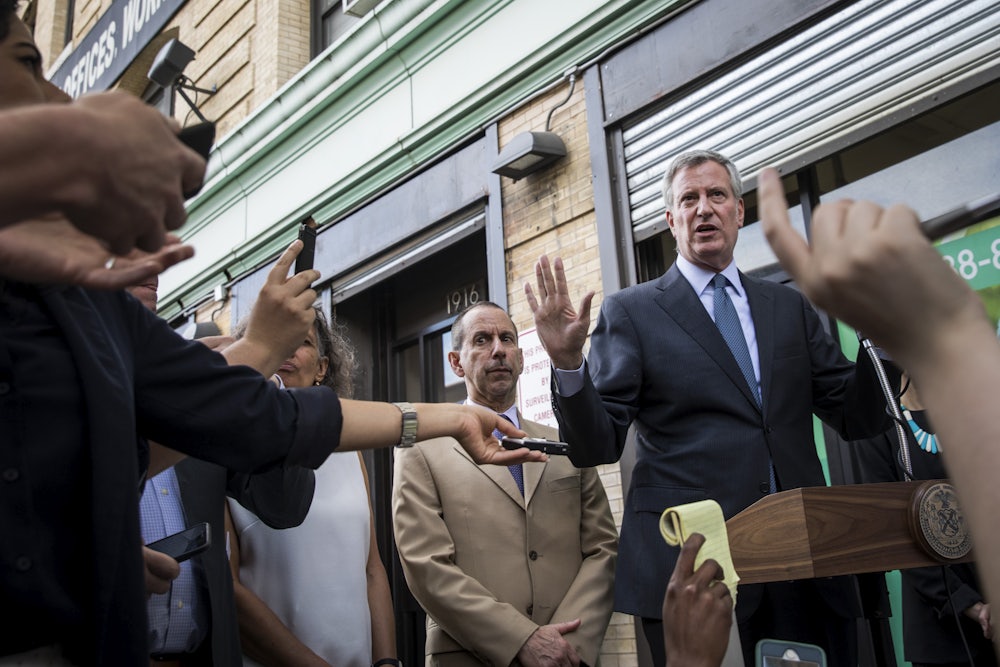In July, New York Governor Andrew Cuomo unveiled a poster to commemorate what New York had just suffered. It depicted a mountain in the shape of the state’s Covid-19 case count. “We went up the mountain, we curved the mountain, we came down the other side,” he said. What he didn’t mention is that the mountain was a pile of dead bodies, the tens of thousands of New Yorkers who might not have died had he and other leaders throughout the state acted earlier and more decisively.
Now the bodies are starting to pile up again, even as Cuomo is hawking a book he wrote about his own heroism leading his state through the early part of the pandemic. New York State, like almost the entire country, is experiencing uncontrolled spread. New York City, hardest hit in the spring but able to keep infections at bay during the summer, is entering a second wave. We are seeing over 1,000 new cases a day, a situation we haven’t experienced since May, with a worrying increase in deaths.
So far Cuomo and New York City Mayor Bill de Blasio have done almost nothing to stop a repeat of March and April.
But it’s not March and April anymore. In the intervening months, we have learned a lot about Covid-19, including how and where it is most likely to be transmitted. You would think, armed with that knowledge, New York’s leaders would respond quickly and with surgical precision to root out the sources of spread and cut off the possibility of repeating the dark, deadly spring. You would be wrong.
Thus far, Cuomo has ordered bars and restaurants to close at 10 p.m. Before that seemingly arbitrary curfew, these establishments are still permitted to invite a reduced number of customers inside to take off their masks and eat, drink, and chat. Mayor de Blasio tweeted on Wednesday morning, “This is our LAST chance to stop a second wave. We can do it, but we have to act NOW.” He didn’t explain who the “we” was in that sentence; it doesn’t appear to include him.
Previously, the mayor said he would halt indoor dining if the city’s positive rate exceeded 2 percent, “because if we’re already at 2 percent, it means something’s moving in the wrong direction, and we need to take quick measures to stop that from growing.” We’ve long blown past that. Meanwhile, he has said he would close down in-school instruction if the rate exceeded 3 percent and seems intent on doing just that, even though schools in the city have just a .17 percent infection rate.
Surely the health experts who are advising the governor and the mayor know what I know. Research published in Nature this very week used cell phone data in the 10 largest cities between March and May to determine that a small number of places accounted for the vast majority of Covid cases. Those places: restaurants, gyms, and hotels.
Meanwhile, schools and daycares have not been found to be sources of wider spread, at least so far. That’s not to say there is no danger or that teachers who are wary of in-person learning aren’t right to be fearful. Teachers and students are still getting infected. Children are, we know, not in any way immune.
But we could greatly reduce the danger inside childcare and school if we addressed the fact that Covid-19 is starting to spread rapidly throughout the city and state. If there is less Covid in the wider community, less of it will show up inside the places our children go to learn and grow every day—particularly low-income, minority, and disabled children who would be the most affected by a shutdown. The best way to achieve that is to keep people from going inside together and taking off their masks.
We don’t even have to shut everything completely down to stop another wave. Outdoor dining is relatively low-risk. Brief, mostly silent visits inside retail stores should be, as well. Parts of our lives can continue if we wear masks, keep distance, and don’t spend lots of time exposed to strangers indoors.
But it’s obvious that there are some activities that we have to stop engaging in, and the sooner we stop them, the more lives we can save.
Cuomo and de Blasio do face an economic conundrum. Because Congress hasn’t passed more stimulus to help drowning small businesses and unemployed workers—and President Trump appears to have given up on doing anything about the virus at all—shutting down indoor dining means cutting off a source of revenue for restaurants that are barely scraping by as it is. Because Congress hasn’t bailed out our bars and restaurants and offered paycheck replacements for all the people who work there, they will suffer.
But businesses will be harmed regardless of whether the virus once again gets out of control. We could head that off. Yet instead of targeting the most dangerous places to stop the worst-case scenario, de Blasio is contemplating a shutdown of the city’s public schools as early as next week, before indoor dining might be rescinded.
New York should really know better. Still, we’re not the only ones getting things backward. Boston has canceled in-person school for high-needs students while indoor dining has continued. Philadelphia canceled its plans to reopen schools while also letting people eat inside restaurants.
We could reorder our priorities. In Germany, France, and Ireland, schools have been exempted from lockdowns addressing an increase in Covid cases, with the brunt focused on bars, restaurants, gyms, and theater and concert venues instead.
De Blasio is right about one thing: It’s not too late. Acting now is better than failing to act at all. The longer our leaders wait, though, the higher cases will climb. The more difficult it will be to keep schools and daycares open so children can learn and parents can keep their sanity. People will die. All of that will be on their heads.
